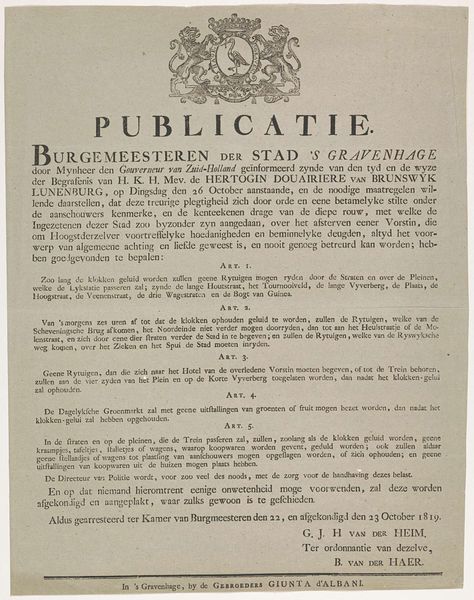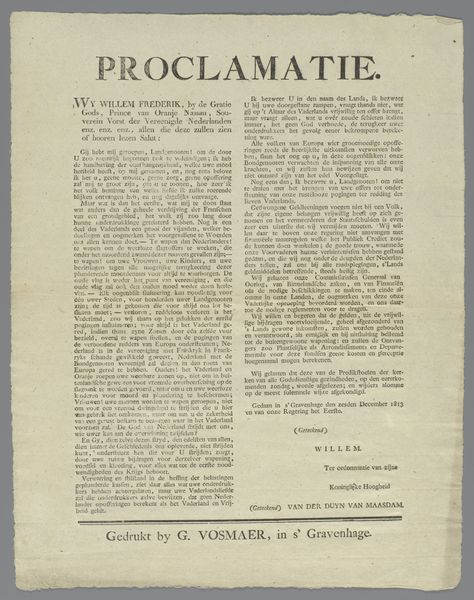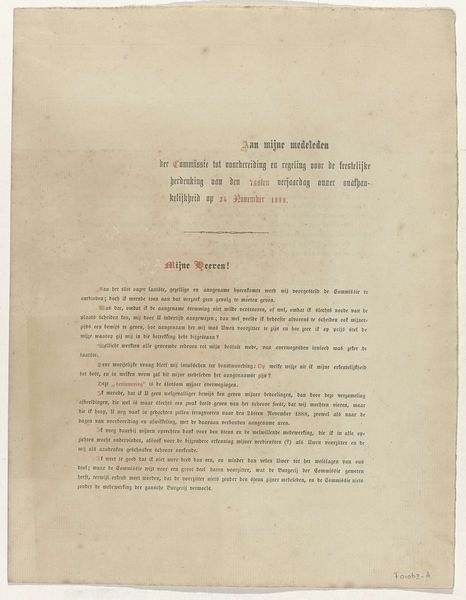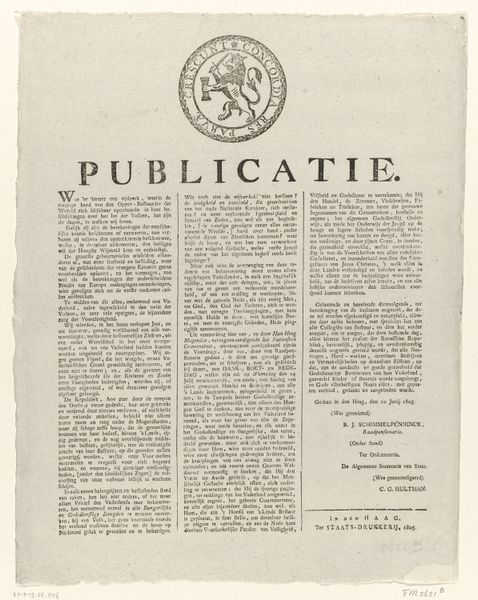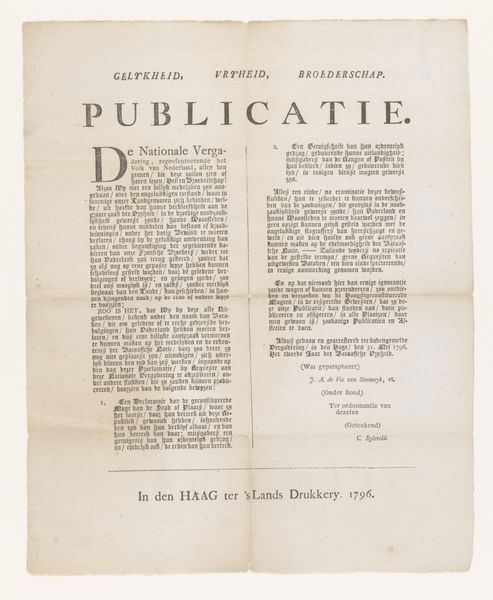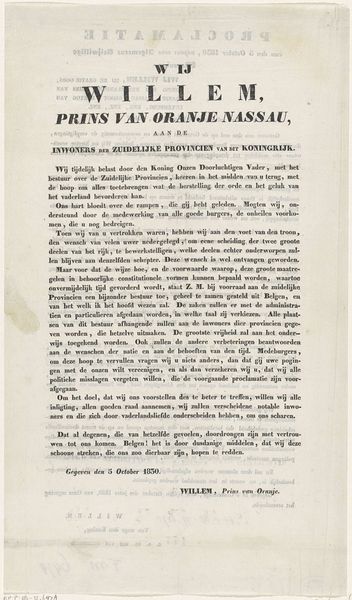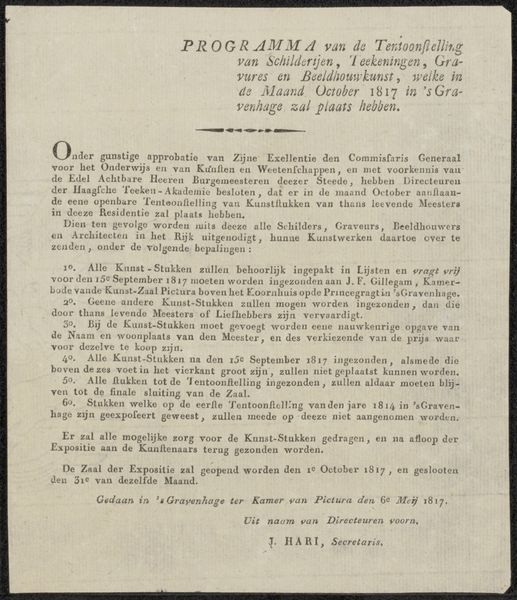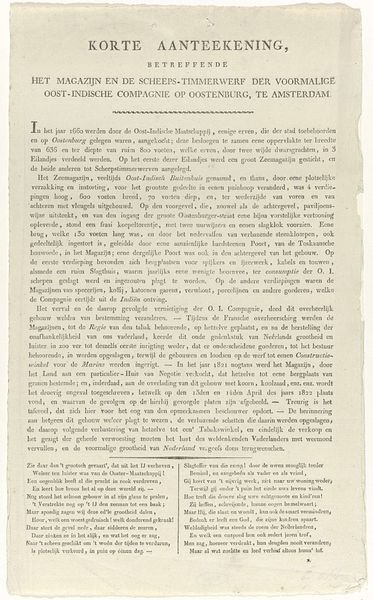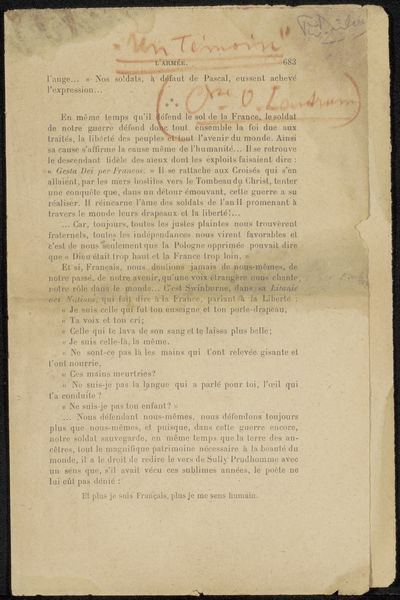
Oproep om te strijden in het leger van Willem I Frederik, koning der Nederlanden, door het bestuur van de stad Vlaardingen Possibly 1815
0:00
0:00
print, typography, engraving
#
neoclacissism
#
aged paper
# print
#
old engraving style
#
hand drawn type
#
text
#
typography
#
fading type
#
stylized text
#
thick font
#
handwritten font
#
classical type
#
engraving
#
historical font
#
columned text
Dimensions: height 209 mm, width 167 mm
Copyright: Rijks Museum: Open Domain
Editor: Here we have a print entitled "Oproep om te strijden in het leger van Willem I Frederik, koning der Nederlanden, door het bestuur van de stad Vlaardingen," dating probably from 1815, by Hendrik Luidwijn van Linden van den Heuvell. It seems to be an engraved public notice. The bold typography really stands out, giving the whole piece a very urgent feel. How do you interpret this call to arms through a historical lens? Curator: It’s crucial to remember that this print appeared in a very specific political landscape. Think about it: the Netherlands had just been liberated from Napoleonic rule and were establishing a new kingdom under Willem I. This "oproep" – call to arms – is a direct product of that transition. How do you think the recent history shaped its reception? Editor: Well, people would be both relieved to be free of French control, but probably war-weary. This call to action must have stirred up complex feelings. Curator: Precisely! The government is actively using this print to create a sense of national unity, trying to galvanize the public. The emphasis on defending "Vorst en Vaderland" – Prince and Fatherland – tells us that the goal was not merely about military defense. It was to rally citizens around the newly formed Dutch identity. Look closely; can you spot other visual cues that hint at those aspirations? Editor: The stylized, almost classical lettering makes it look very official, I guess that could imply authority. Curator: Exactly. The print participates in constructing that authority. We must consider how visual culture – like typography and print distribution – can be instruments of power, used by the state to promote certain ideologies. Understanding those intentions changes how we view seemingly simple historical artifacts. Editor: So, this isn’t just a call for soldiers; it’s a carefully constructed piece of propaganda! Curator: In a sense, yes. It shows how even basic printed matter was part of a broader project of nation-building in the early 19th century. It's really fascinating to see history playing out through art. Editor: Absolutely, it sheds light on the intersection of politics, visual culture, and public sentiment. This print provides insight beyond just battle strategies and political aspirations!
Comments
No comments
Be the first to comment and join the conversation on the ultimate creative platform.
